Shalini Misra’s Delhi home is a seasonal sanctuary ‘made in India’
Interior designer Shalini Misra’s retreat in the Indian capital champions modernist influences, Islamic ancestry and local craftsmanship
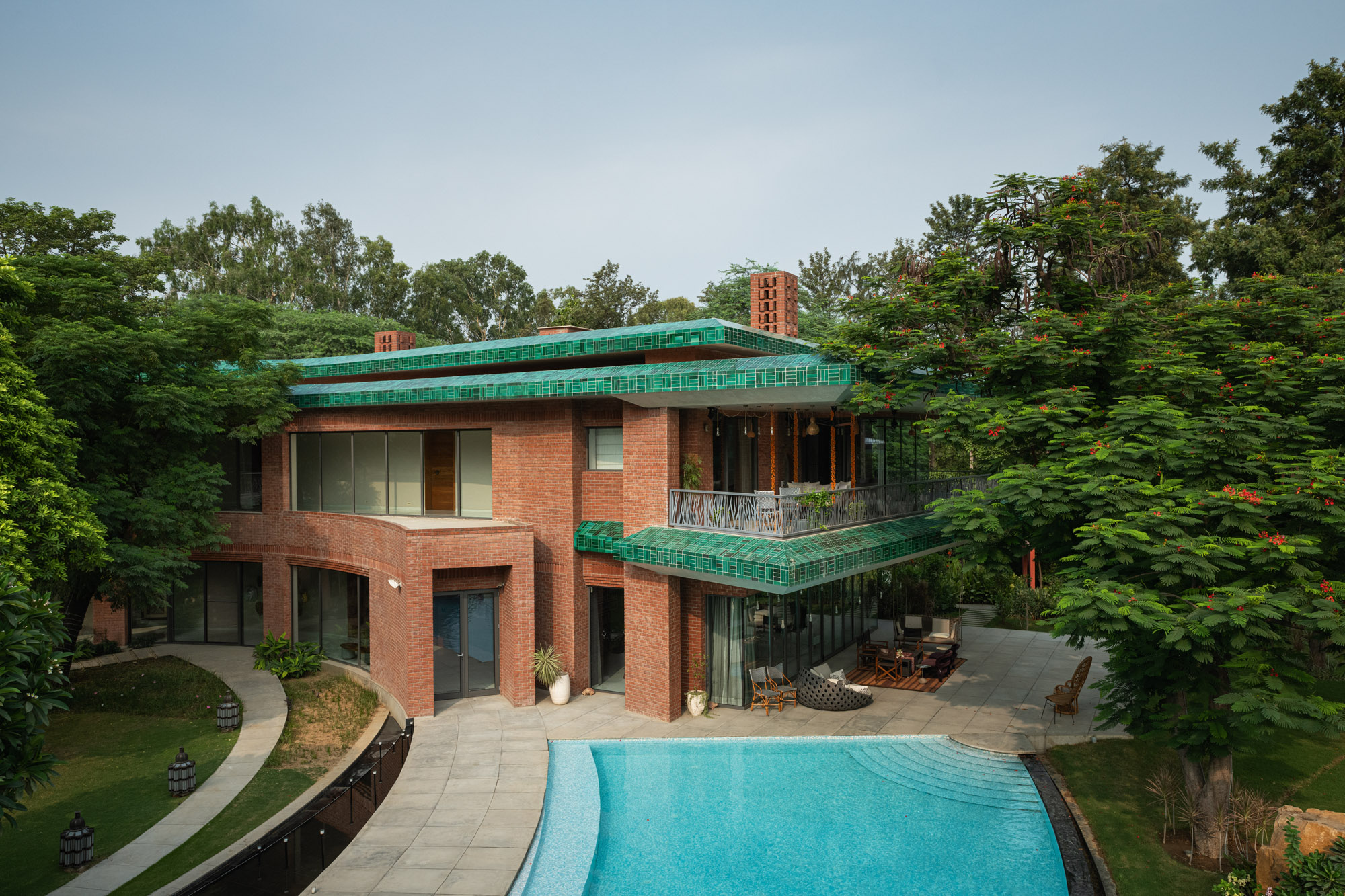
London-based interior designer and architect Shalini Misra’s ‘farmhouse’, cocooned in 3.7 acres of artfully sculpted gardens, is a refreshingly original family home. Its low-slung volume is distinctly modernist, but trimmed with classical blue-green tiles of Islamic ancestry; its sinuous curves follow the arcs of healing chakras, and seven moon gates punctuate the densely planted perimeter walk. Despite doffing her cap to modern masters such as Frank Lloyd Wright, James Turrell and Joseph Allen Stein, Misra wanted ‘essentially a “Made in India” house that would provide both anchor and seasonal sanctuary’ for her family’s peripatetic, international lifestyle.
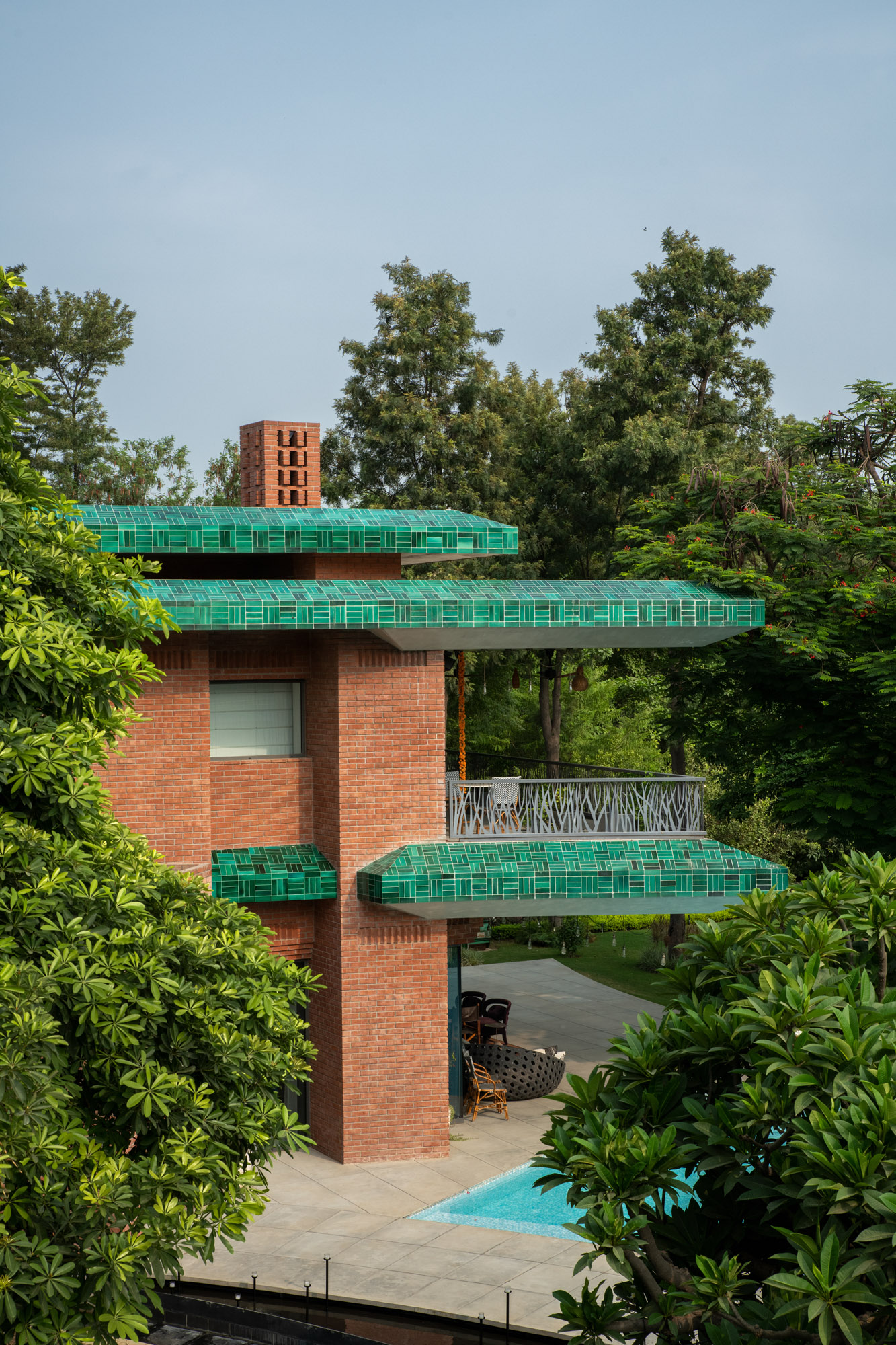
Take a tour of Shalini Misra's home in Delhi
Long before they moved to America, Shalini and her husband Rajeev – who heads SoftBank’s Vision Fund that’s invested $8bn in Indian start-ups – were Delhi people. An architecture school graduate, Misra later studied urban planning at Columbia University. A shift to London in 1994, and raising a family of three, did not deter her from taking another degree in virtual reality architecture at the Bartlett.
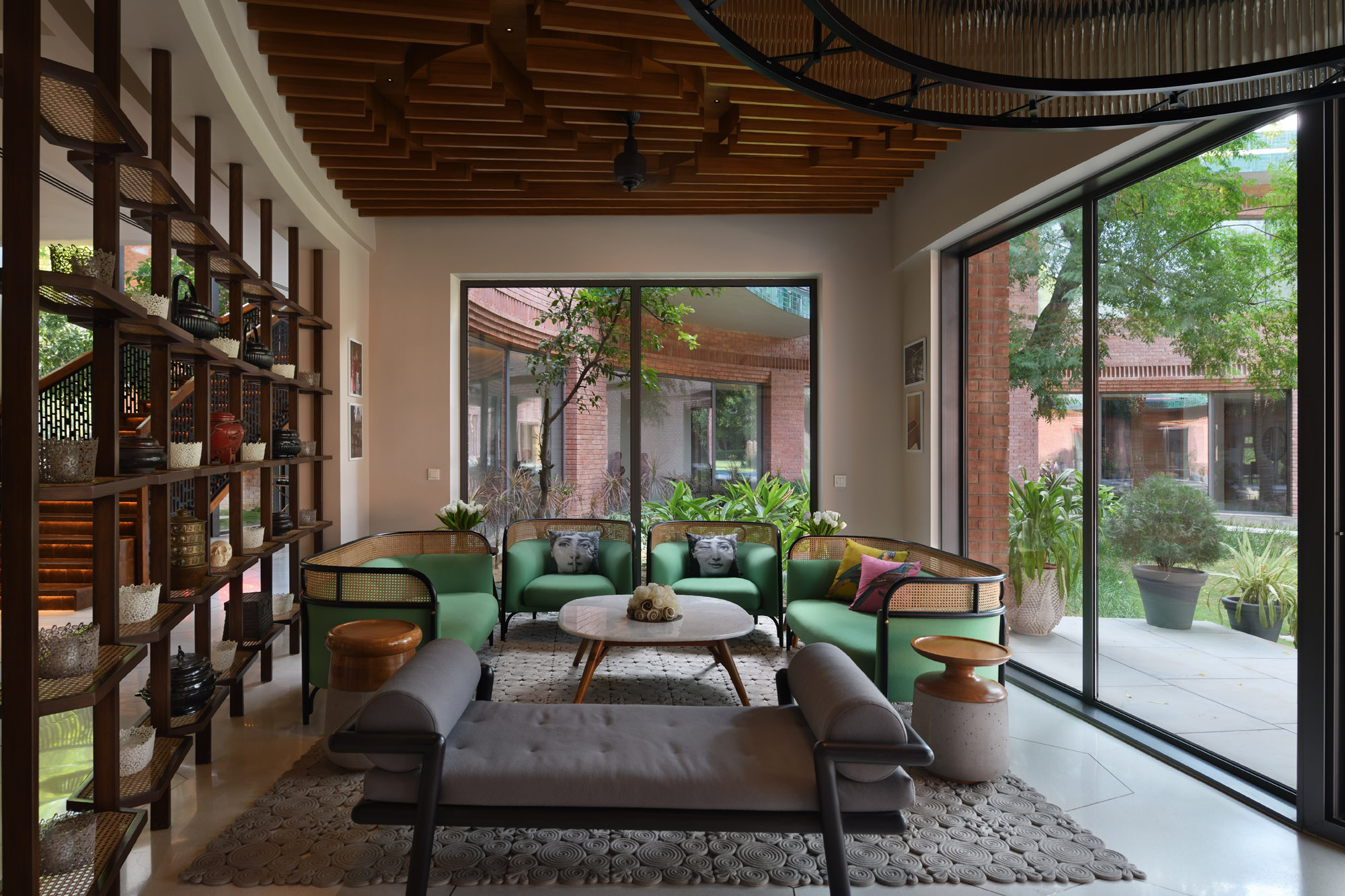
‘I hadn’t a clue about interior design,’ says Misra, as she plunged into an ‘unknown world of swags, tails and tiebacks’ when friends handed her a four-bedroom Kensington flat to refurbish. Operating her first office from her dining table, Misra is now at the helm of a studio based in Queen’s Park in north London, with 12 full-time designers and a portfolio of high-end residential and commercial interiors.
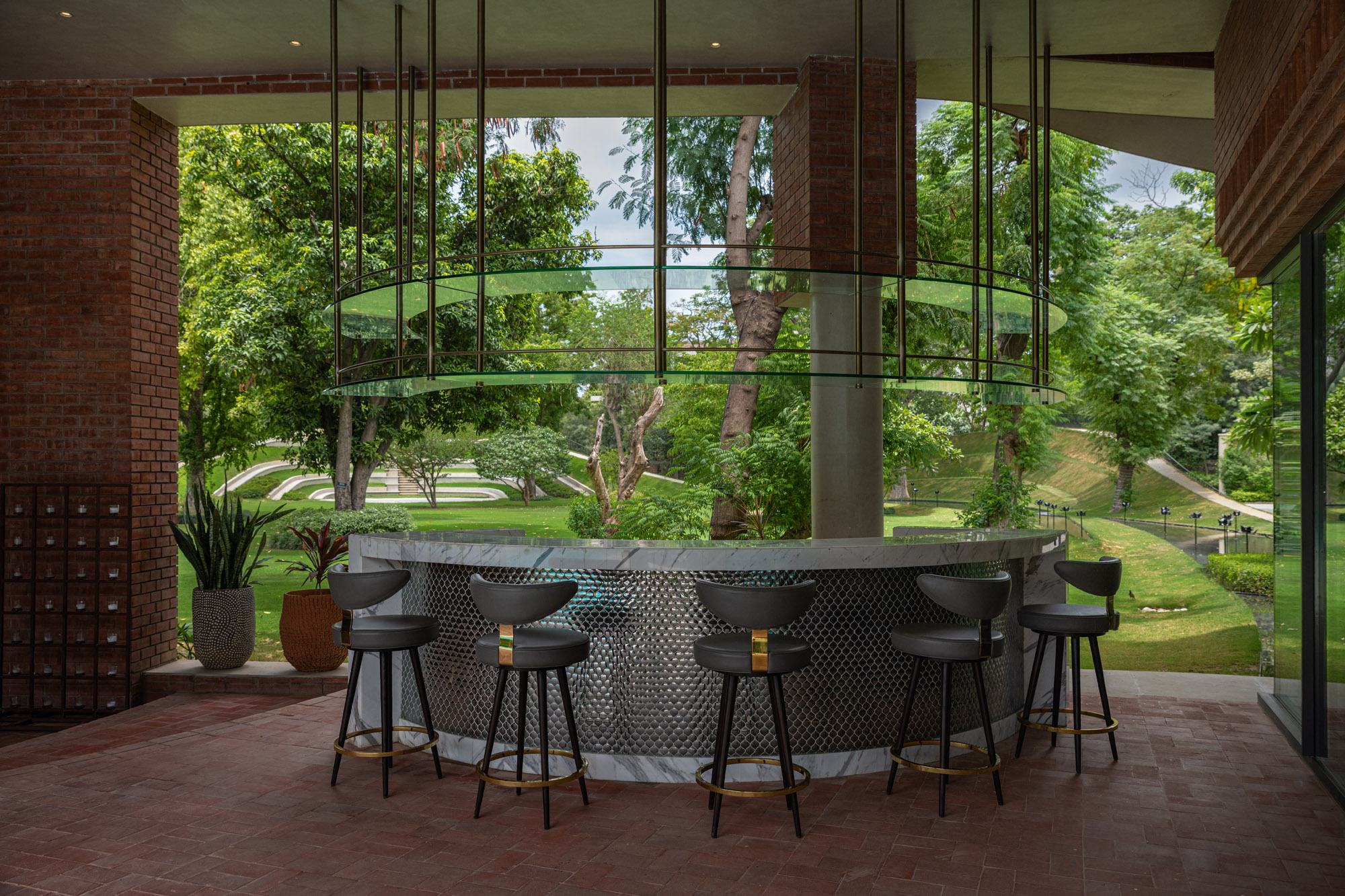
But her 20,000 sq ft family retreat in Delhi is far removed from the global melting pots of Belgravia and Chelsea. From the moment the couple acquired the property in 2014 from a general’s widow, Misra knew the house would emerge from, and merge into, the landscape of nearly 200 flowering and fruit trees.
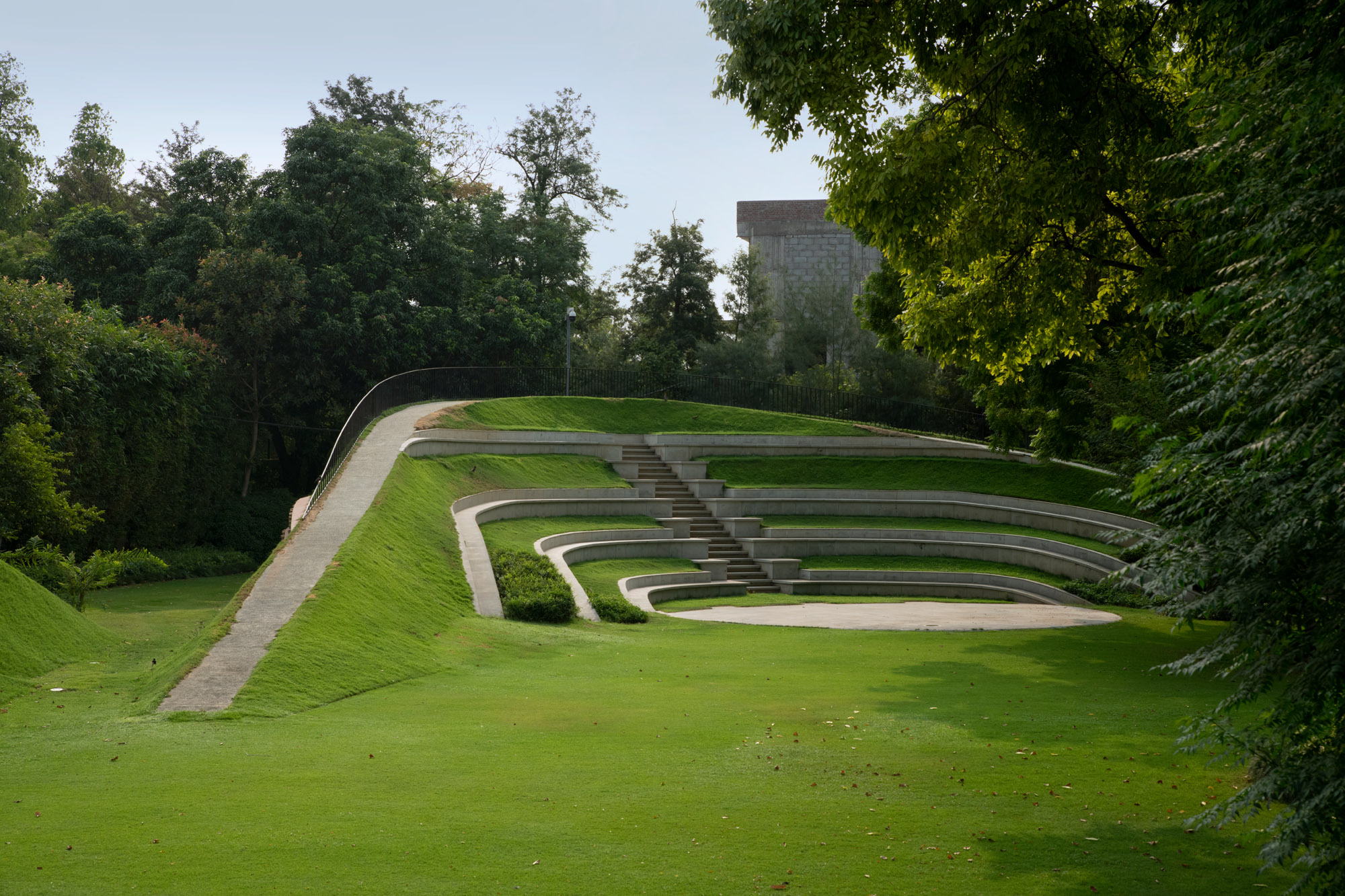
The linked harmony of indoor and outdoor spaces is a key feature of traditional Indian architecture. Almost immediately the house was pivoted on a view of two grand frangipanis, then began to flow as a continuum of spaces, with formal and informal living and dining areas, a double-height entrance foyer, study, and four generous bedrooms above all opening onto courtyards, terraces, balconies and garden enclosures.

Misra used double-insulation brickwork to ward off summer heat, and created jali screens to filter light and shade. ‘I couldn’t bear the idea of the imported marble, wood and fabrics that often end up in high-end Indian homes,’ she says. She sourced materials from local designers and artisans, often scouring remote villages and craft fairs for specialists.
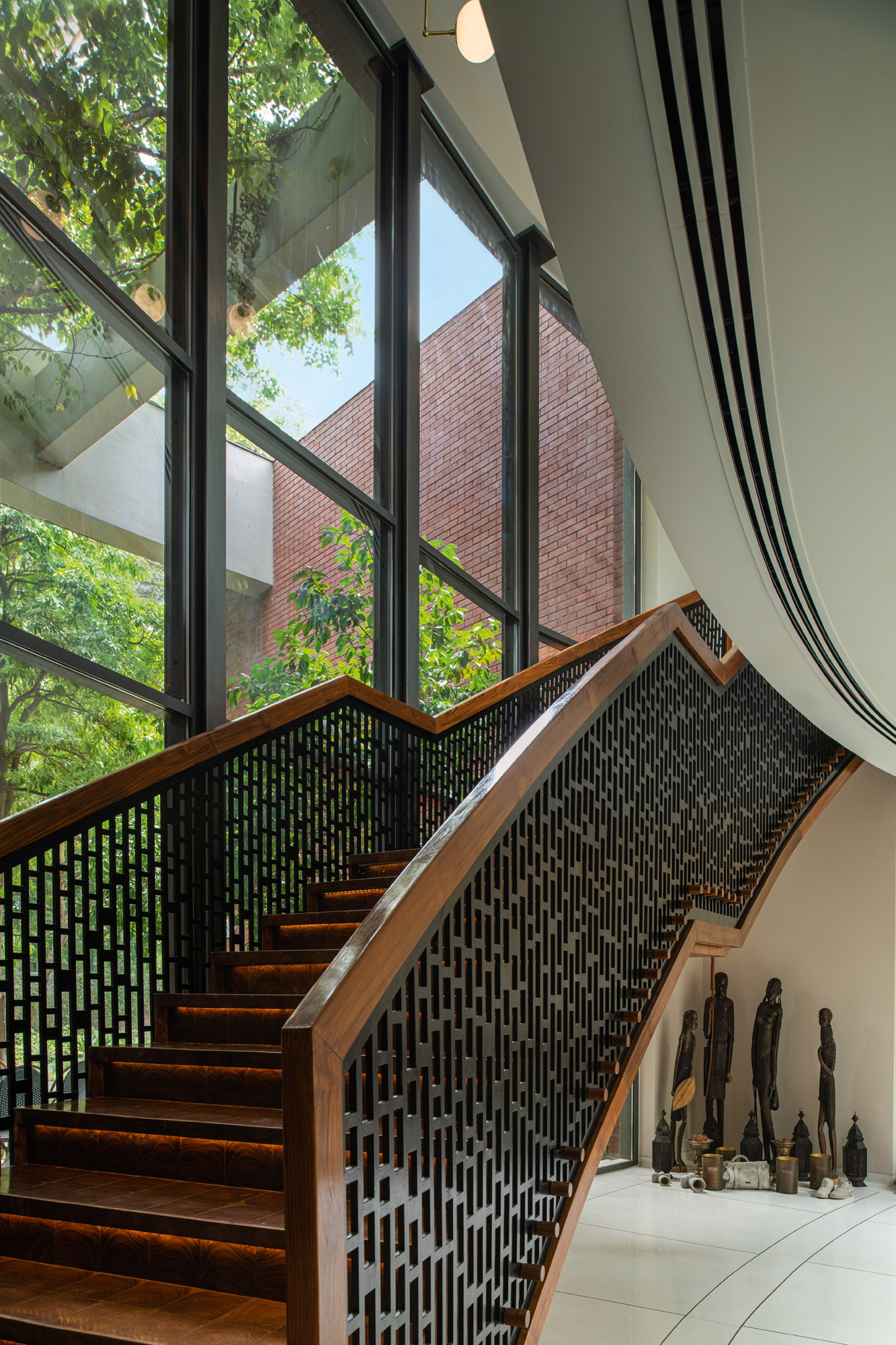
‘I was determined to lay an in situ terrazzo floor and set up a village of master craftsmen on the premises.’ She also commandeered a platoon of mirror-inlay artists from Rajasthan to recreate the shimmering ornamentation of Indian palaces.
Wallpaper* Newsletter
Receive our daily digest of inspiration, escapism and design stories from around the world direct to your inbox.
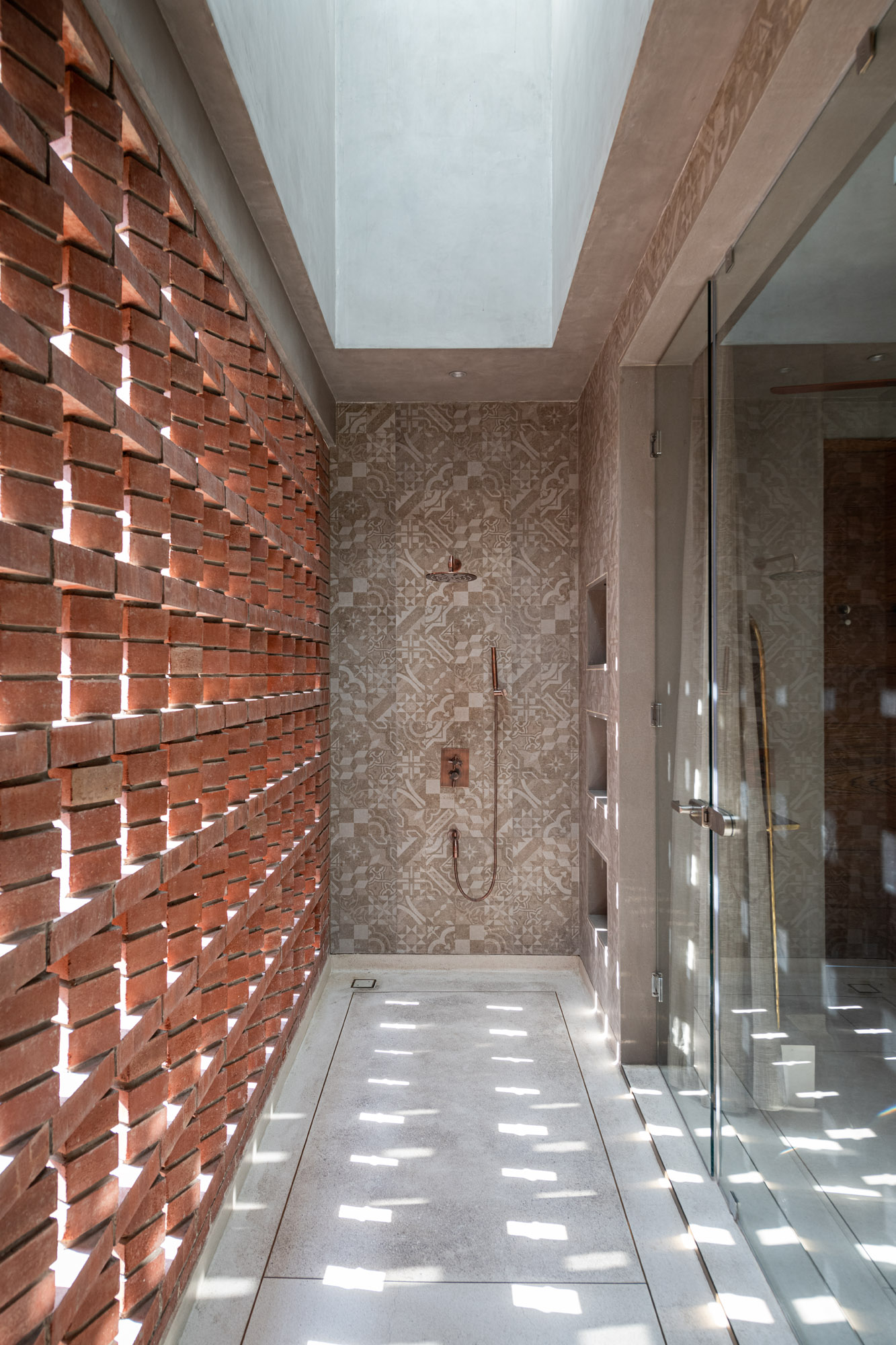
Much of the woodwork, including the panelled study, was accomplished by a modest local carpenter to her studio’s blueprints. Contemporary Delhi-based designers were sought out, from landscape architect Samir Mathur and lighting designers Klove Studio, to bespoke furniture makers Mike and Preeti Knowles of Hidden Gallery, Puru Das from DeMuro Das, Alex Davis, and Ashish V Anand from Living Spaces.
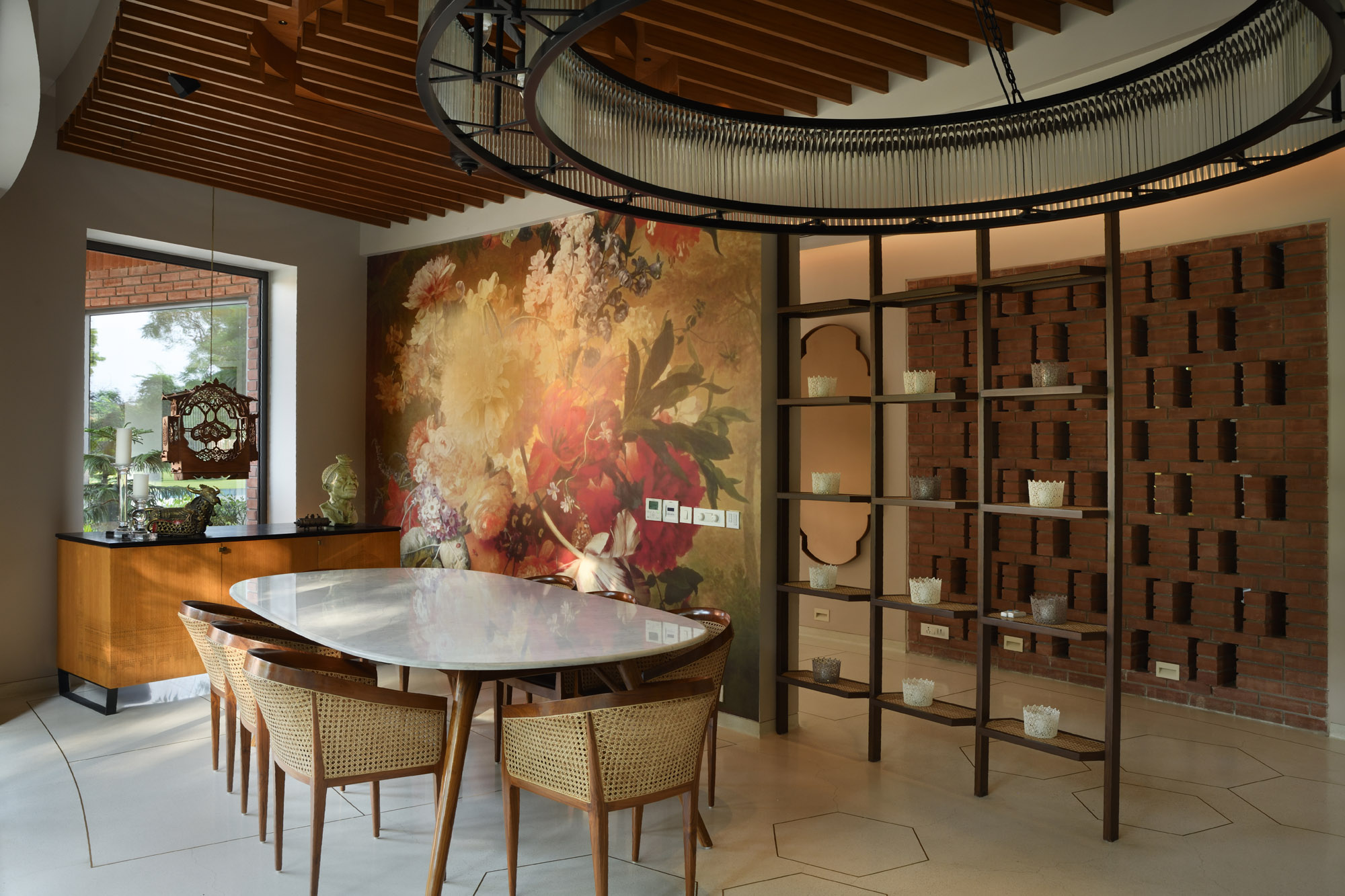
The couturier Tarun Tahiliani offered to dress a dining room wall with an expanded colonial aquatint with gold embroidery. ‘He refused to charge a fee, and has become a friend,’ she says, of the kind of close bonds that developed during her three-year building odyssey.
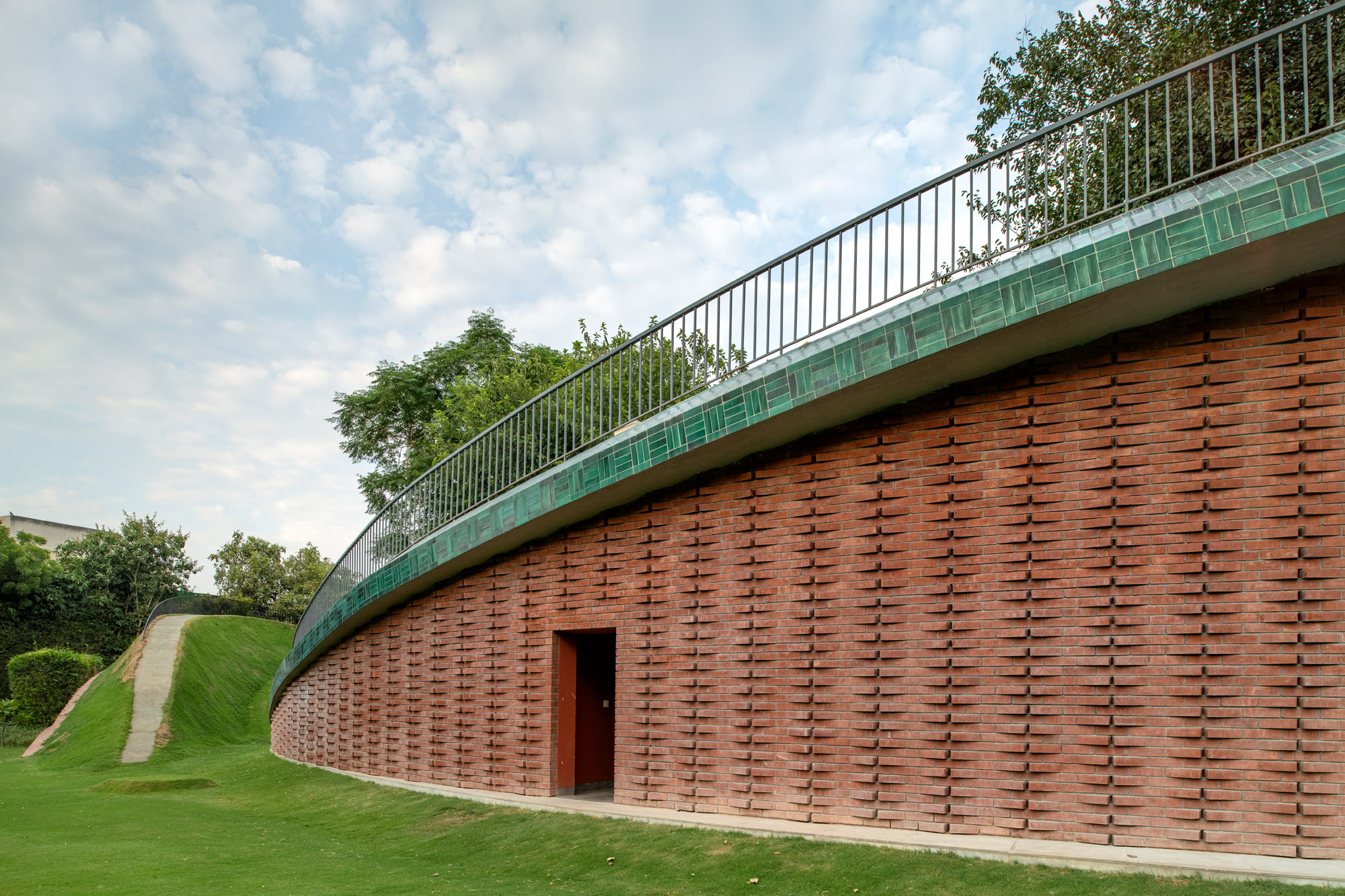
She also commissioned the US-born, Britain-based landscape architect and cultural theorist Charles Jencks to devise the plan for the garden, with its captivating mounds, swirls and mystical shapes. As the first raindrops of the monsoon fall, she steps out, inhales and says: ‘It’s the smell of Indian earth I miss most. Soon the parrots and peacocks will splash their colours. Could anyone ask for a better homecoming?’
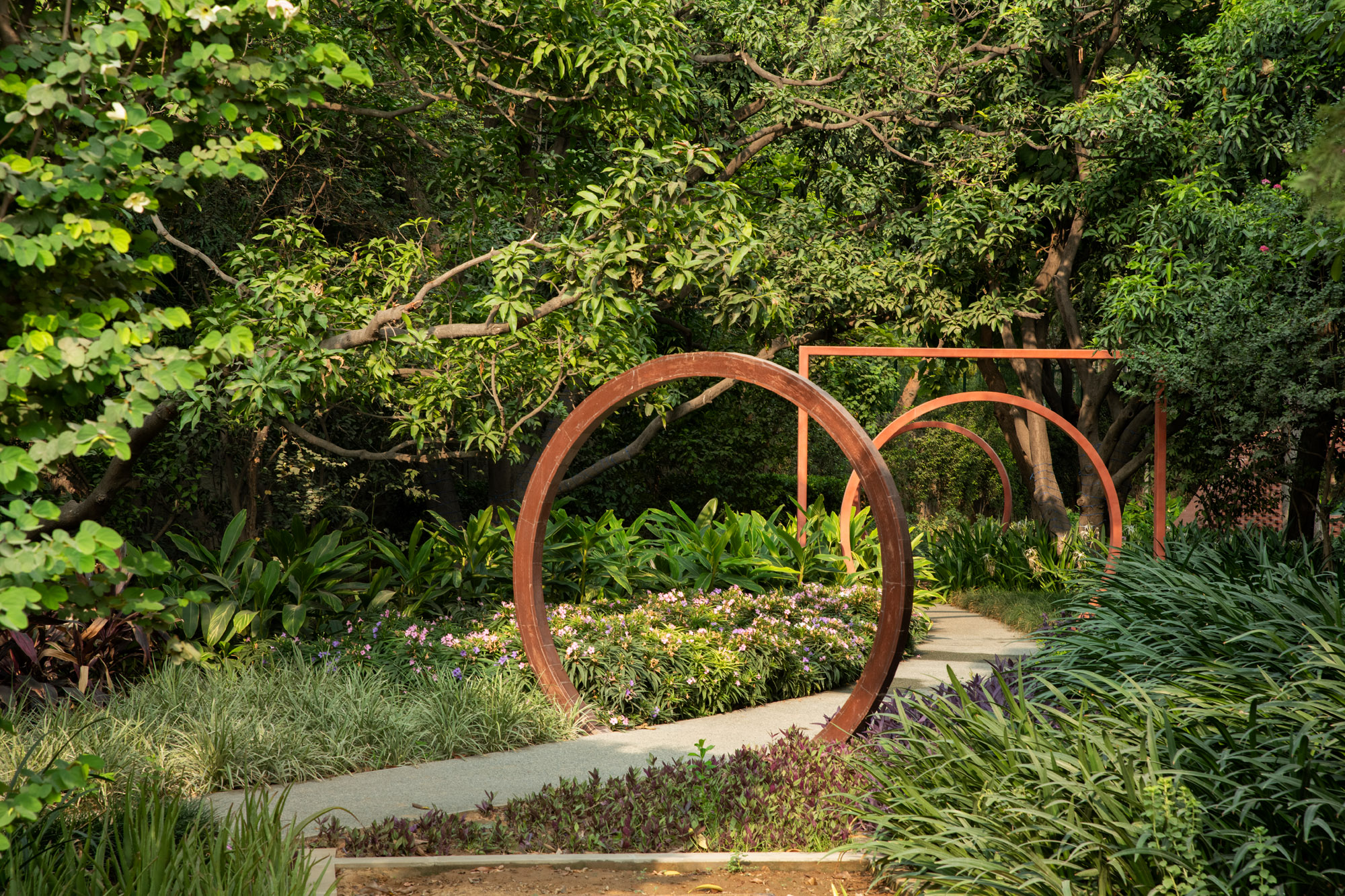
A version of this article first appeared in the October 2019 issue of Wallpaper*
-
 Fancy a matcha-beer cocktail? Visit this dashing new LA restaurant
Fancy a matcha-beer cocktail? Visit this dashing new LA restaurantCafé 2001 channels the spirit of an American diner with the flow of a European bistro and the artistry of Japanese cuisine
By Carole Dixon
-
 Los Angeles businesses regroup after the 2025 fires
Los Angeles businesses regroup after the 2025 firesIn the third instalment of our Rebuilding LA series, we zoom in on Los Angeles businesses and the architecture and social fabric around them within the impacted Los Angeles neighbourhoods
By Mimi Zeiger
-
 New book 'I-IN' brings together Japanese heritage and minimalist architecture at its finest
New book 'I-IN' brings together Japanese heritage and minimalist architecture at its finestJapanese architecture studio I-IN flaunts its expert command of 21st-century minimalism in a new book by Frame Publishers
By Ellie Stathaki
-
 A triplex Mumbai penthouse contains sculptural staircases and expansive terraces
A triplex Mumbai penthouse contains sculptural staircases and expansive terracesEnso House is a multigenerational Mumbai penthouse by S+PS Architects that combines a reorganised interior programme with bespoke finishes and crafts
By Jonathan Bell
-
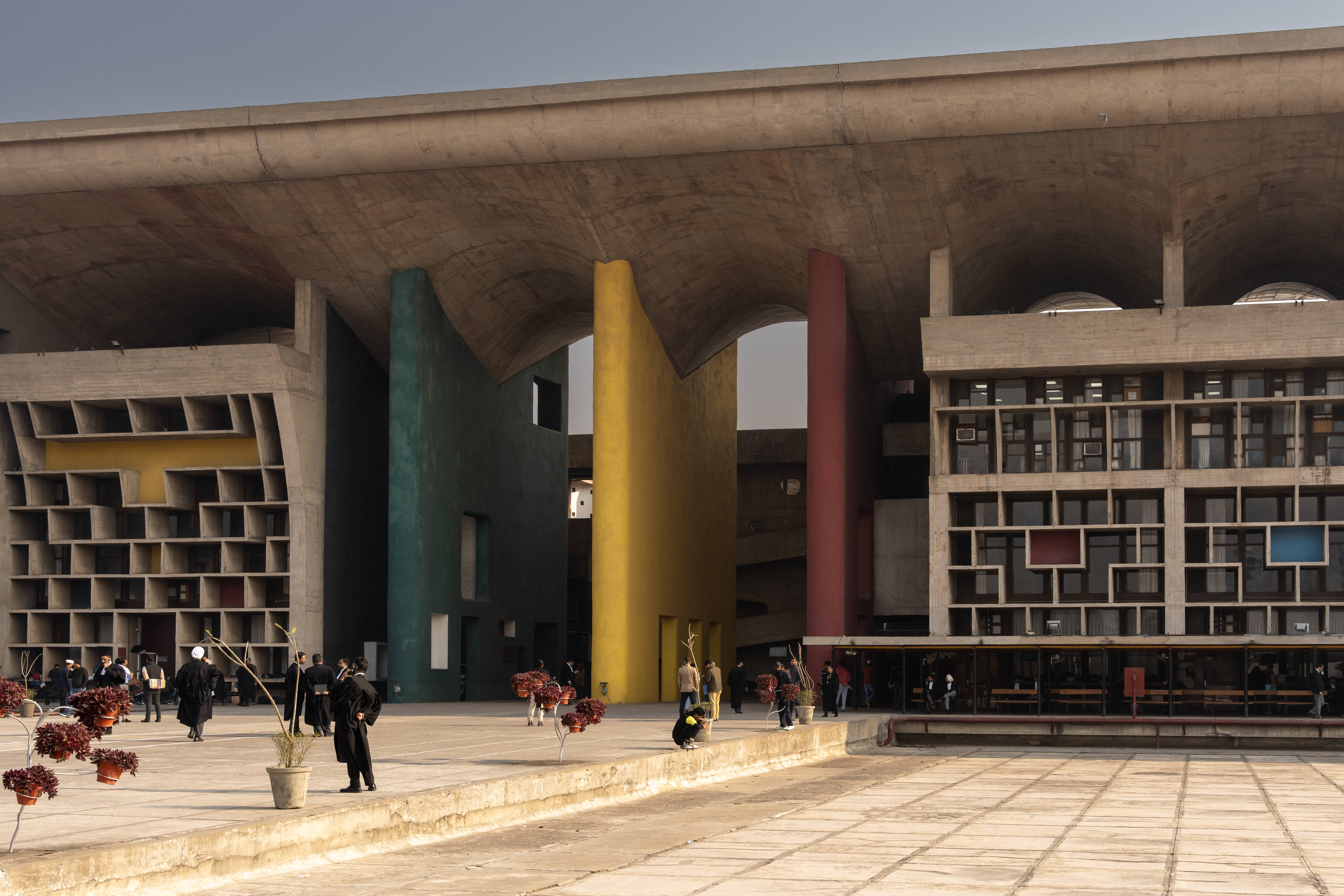 This ‘architourism’ trip explores India’s architectural history, from Mughal to modernism
This ‘architourism’ trip explores India’s architectural history, from Mughal to modernismArchitourian is offering travellers a seven-night exploration of northern India’s architectural marvels, including Chandigarh, the city designed by Le Corbusier
By Anna Solomon
-
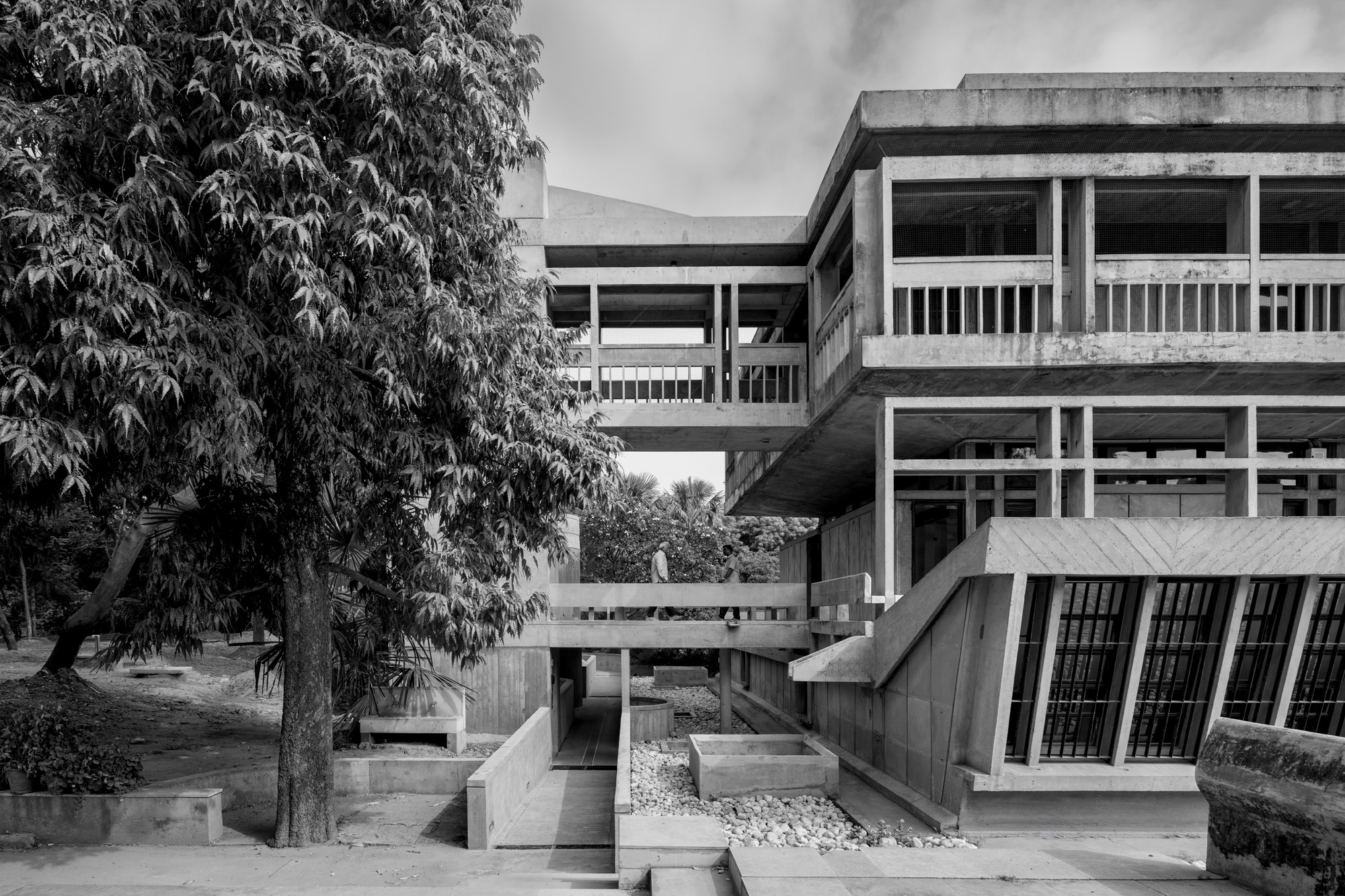 At the Institute of Indology, a humble new addition makes all the difference
At the Institute of Indology, a humble new addition makes all the differenceContinuing the late Balkrishna V Doshi’s legacy, Sangath studio design a new take on the toilet in Gujarat
By Ellie Stathaki
-
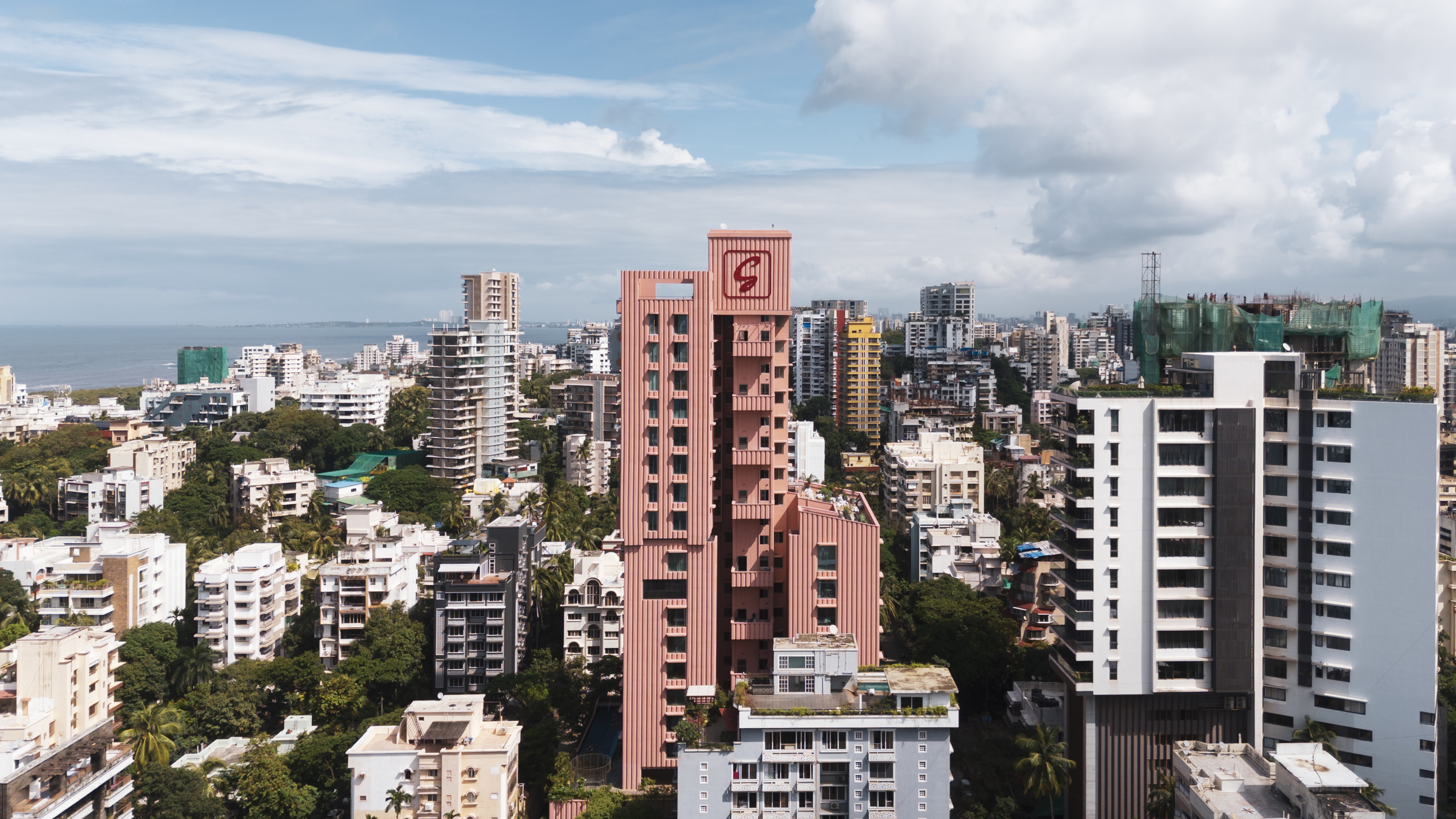 Pretty in pink: Mumbai's new residential tower shakes up the cityscape
Pretty in pink: Mumbai's new residential tower shakes up the cityscape'Satguru’s Rendezvous' in Mumbai houses luxury apartments behind its elegant fluted concrete skin. We take a tour.
By Jonathan Bell
-
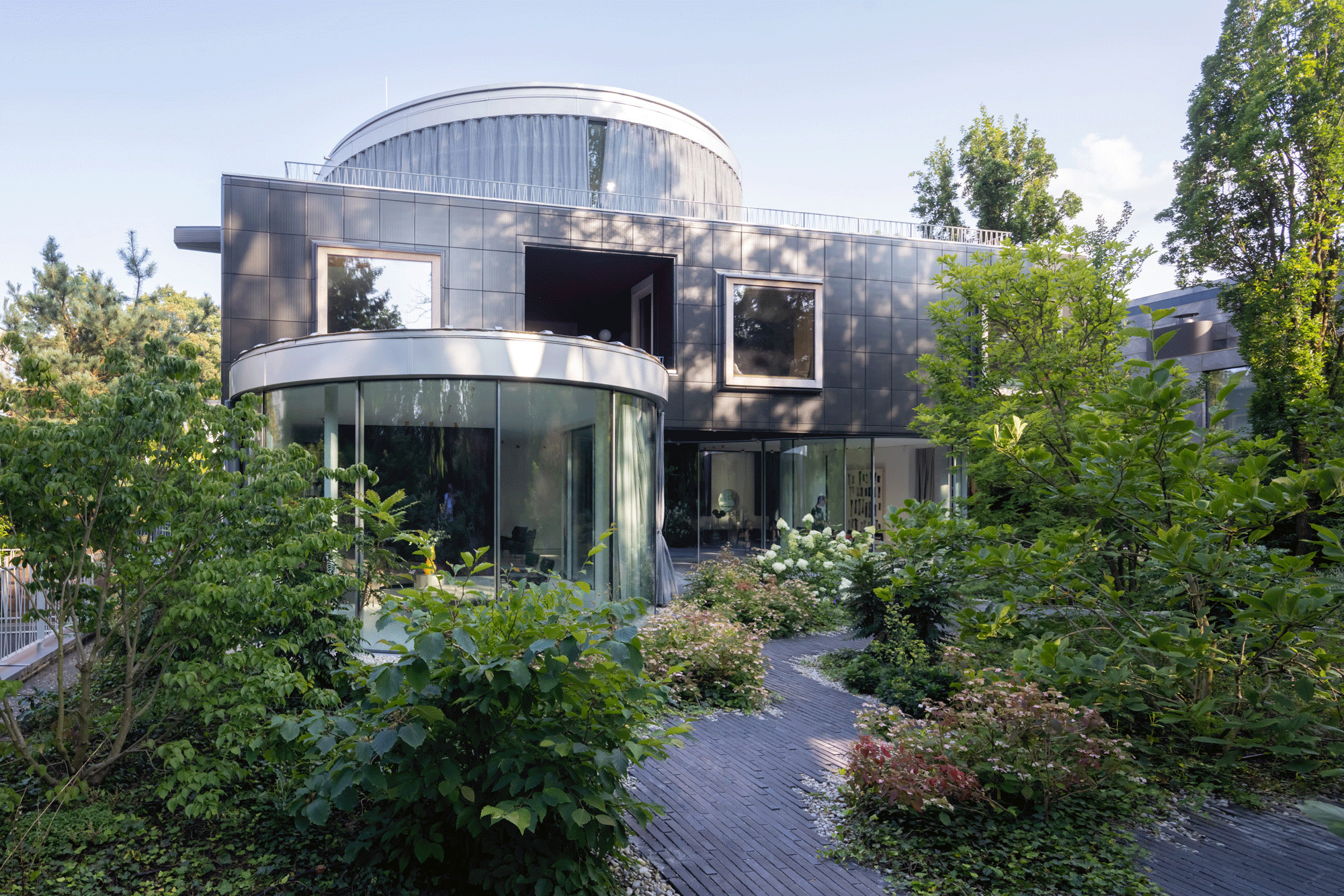 Join our world tour of contemporary homes across five continents
Join our world tour of contemporary homes across five continentsWe take a world tour of contemporary homes, exploring case studies of how we live; we make five stops across five continents
By Ellie Stathaki
-
 Walk through an Indian villa near Mumbai, where time slows down
Walk through an Indian villa near Mumbai, where time slows downIn this Indian villa, Architecture Brio weaves together water features, stunning gardens and graceful compositions to create a serene retreat near Mumbai
By Stephen Crafti
-
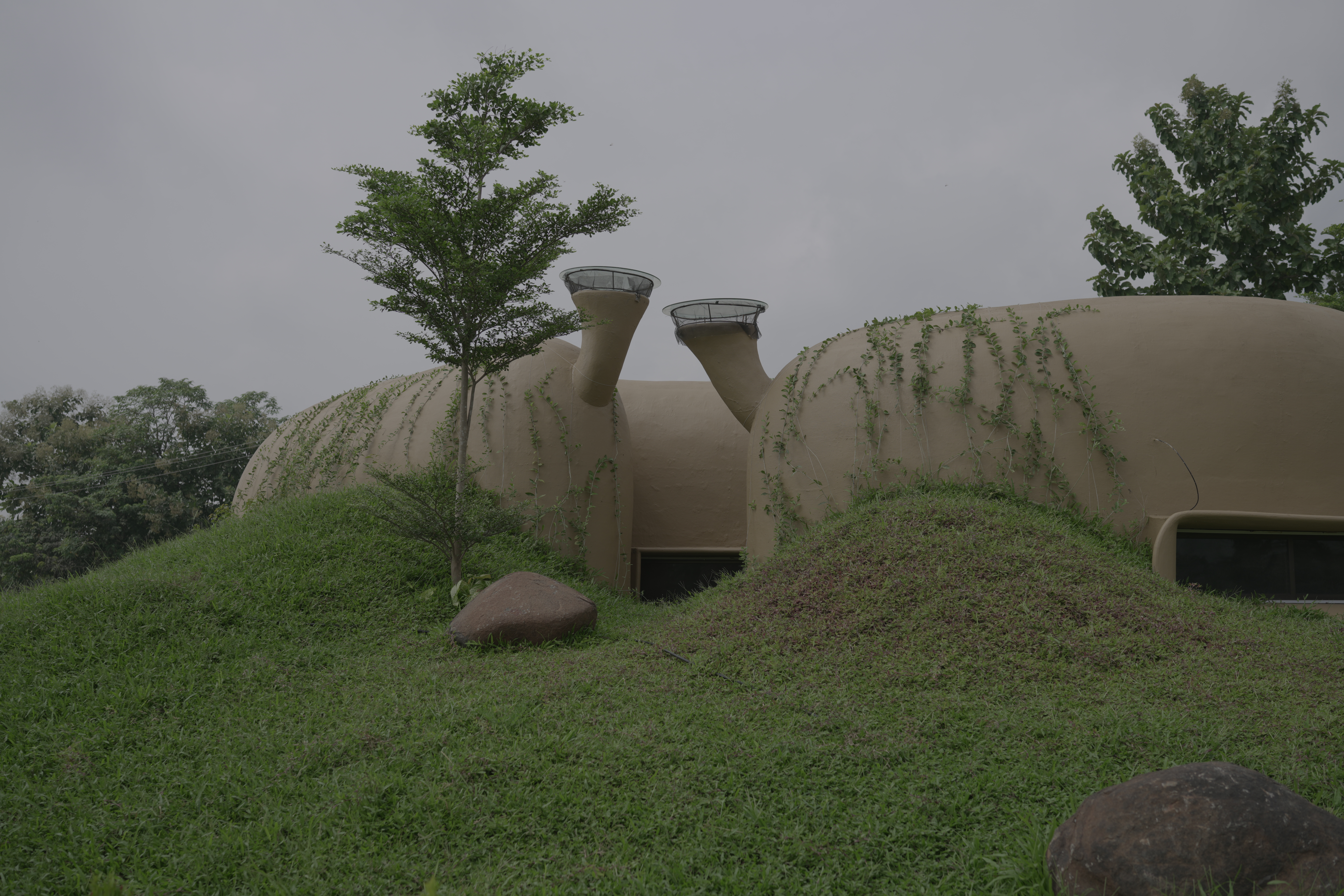 Nine emerging Indian architecture studios on a mission to transform their country
Nine emerging Indian architecture studios on a mission to transform their countryWe survey the emerging Indian architecture studios and professionals, who come armed with passion, ideas and tools designed to foster and bolster their country's creative growth
By Ellie Stathaki
-
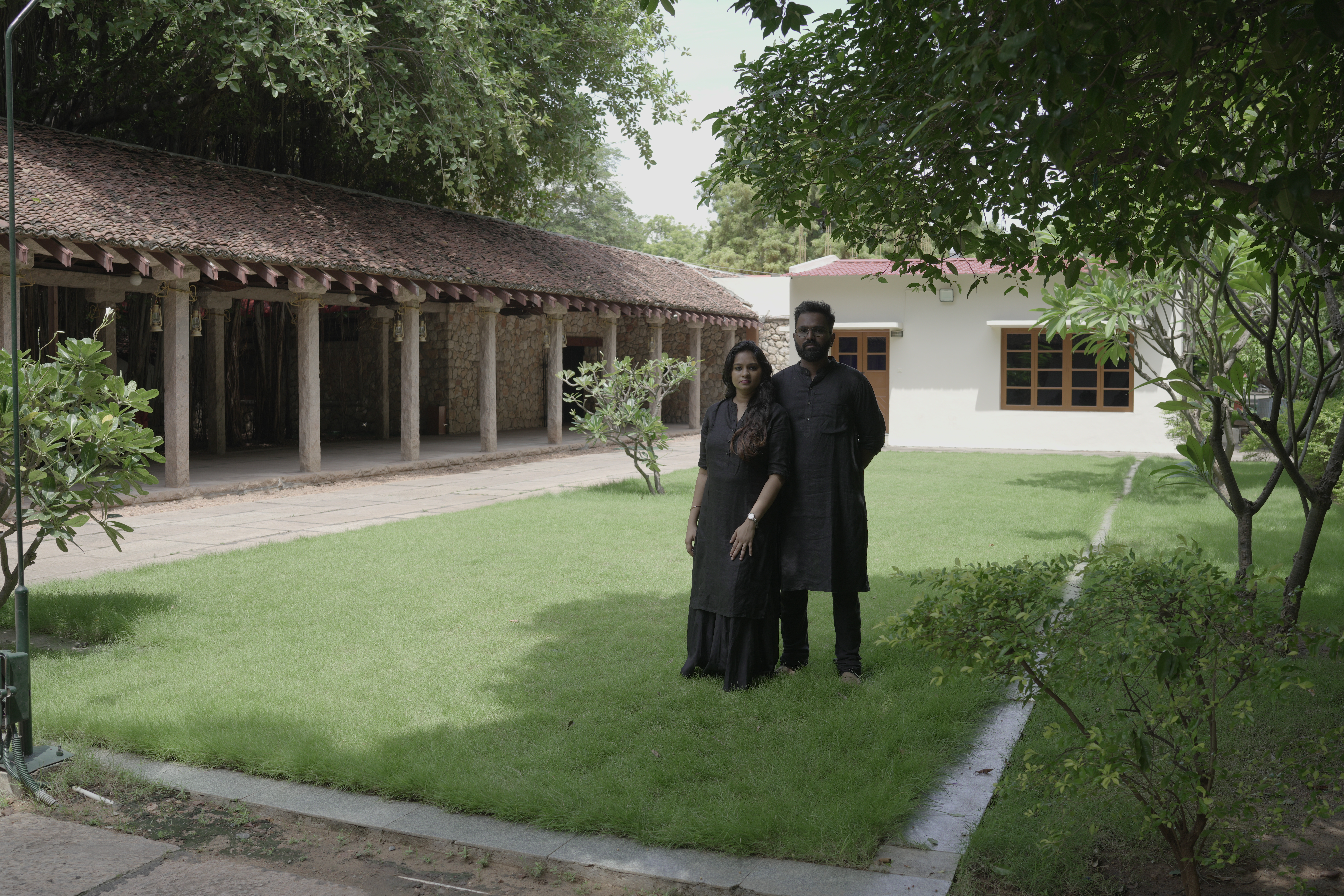 STO.M.P on the architecture studio's work, love of craftmanship and 'the cinematic details'
STO.M.P on the architecture studio's work, love of craftmanship and 'the cinematic details'We zoom into Indian architects STO.M.P from Madurai, exploring their growing portfolio and cinematic sensibility
By Vaishnavi Nayel Talawadekar